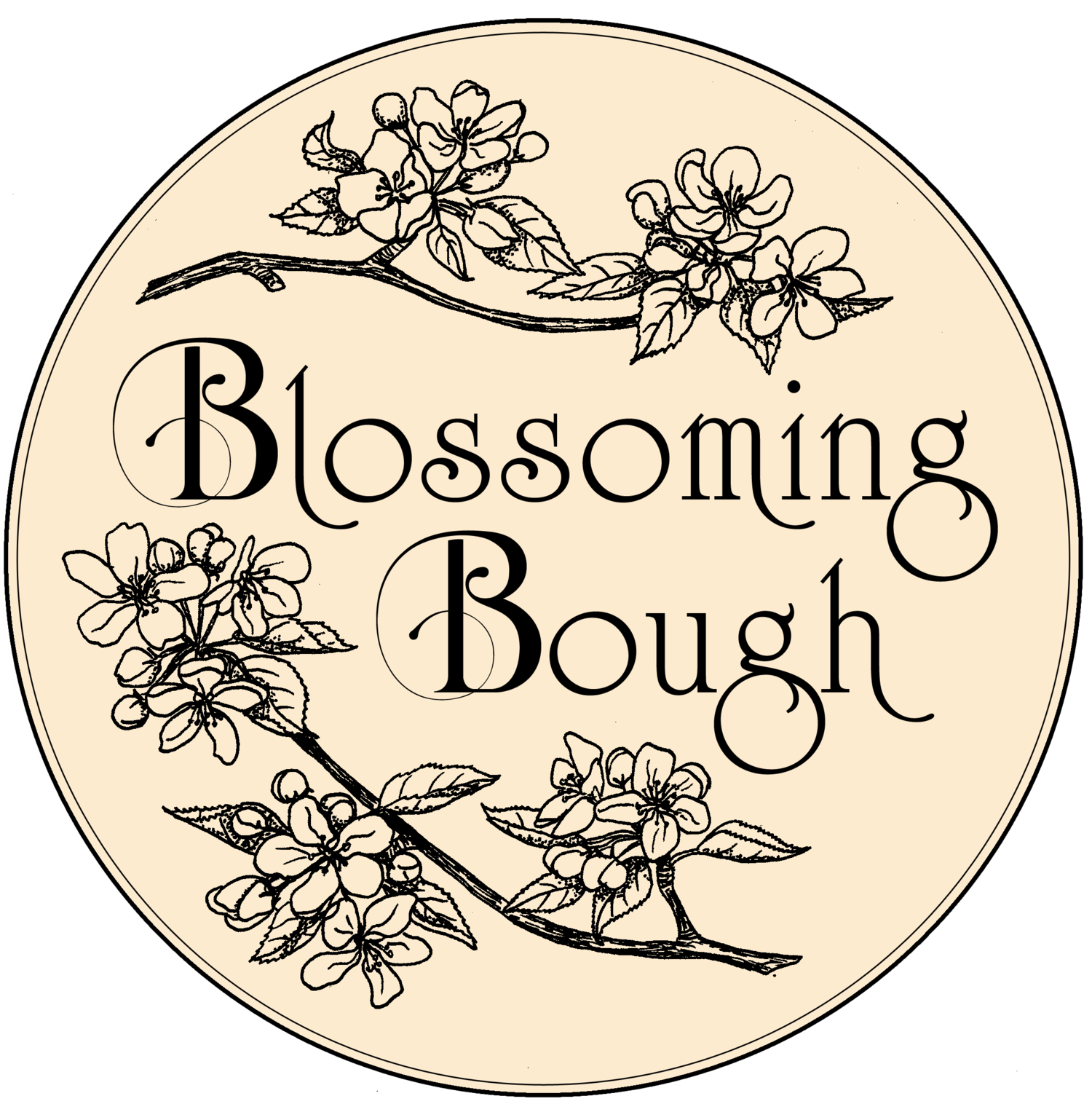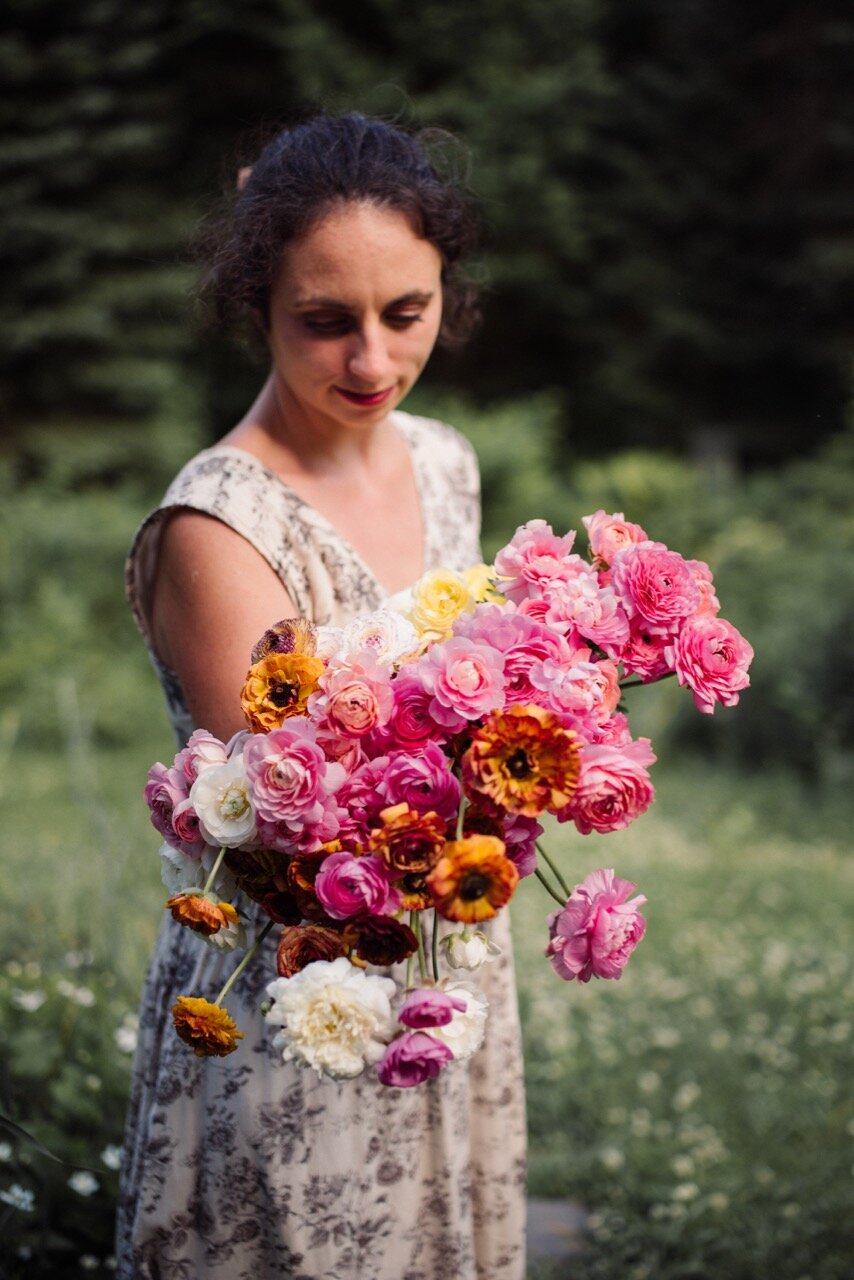Ranunculus: a perennially adored wedding and cut flower. These gorgeous, ephemeral blooms are native to the Mediterranean and Middle East, and are an early spring flower there, putting on most of their growth in the cool, damp winter months. However, like so many bulb-forming plants adapted to that region (did you know that many tulips and narcissus come from there?), they can be grown in many different climates depending on how much work the gardener is willing to do (Read on for my instructions!).
In my US zone 3/4 garden, I have found them to be one of the best cut flowers I grow, well worth the extra work they take here, where they are unlikely to survive a winter in the ground. Ranunculus are a perennial species, adapted to last through hot, dry dormant periods by storing food in enlarged root structures. When actively growing, they love the cool late spring and early summer weather we usually get where I live, in a frost pocket near the Canadian border. But, as you’ll read later, there are a number of steps to making them happy here! Because they multiply quickly when they’re happy, I sometimes have corms to share in fall and winter; check the shop page for packs of ranunculus corms to grow yourself. (Not available in winter 2021/2022 but may be back in future years).
Since I have strong local-sourcing ethic for my floral work, it’s super important to me to be able to provide these very popular, romantic flowers from my own garden for at least a portion of the weddings I work on each year. If I buy cut ranunculus flowers from the floral wholesaler, they sometimes come from Canada, but most of the time the flowers have been shipped in from South America or the Netherlands; such a long journey is common for fresh flowers in our strange, globalized world (for more on this, check out the book Flower Confidential). It doesn’t make sense to me to buy flowers coming so far, if I can grow them in my own garden for at least a portion of the year.
So, I’ve had to learn how to grow enough of these beauties to supply the busy late-June and early-July wedding season I normally have. This means hundreds and hundreds of individual plants, which grow from weird, octopus-shaped food-storage structures called corms. After several years of growing ranunculus, I’ve learned a lot about how best to grow this plant. My method is outlined in detail below.
How to Grow Ranunculus
Ranunculus are different than many spring bulbs (like daffodils and tulips) in that they are considered hardy only in zones 7 or 8 and south. They are grown in colder climates with a few extra steps.
Important: Plant them Right-Side Up! The top of the corm is the fuzzy/furry, lighter portion where all the root “arms” come together (you can see this in the photo of the dry corms, above, especially on the one at bottom right that’s resting at the base of my pinkie finger). Sometimes the corms still have some of last year’s stem or leaves, too. Generally the root tips point down.
Choosing a Spot in Your Garden Where They Will Thrive:
An area with good to excellent drainage
Full sun to very light shade
Fairly high soil fertility
A spot you can water regularly in dry spells after you plant them; they hate drying out when they are first forming little roots and leaves
In warm climates, they may need part shade
In cold climates with spring seasons that heat up into the high 70’s quickly, they also may need light shade or to be interplanted with taller plants (like peonies)
Ranunculus in Warm Climates: In zones 7-11, they are planted in the ground in fall for late winter or early spring bloom. They should be soaked in a shallow tray of water overnight before planting (they will swell many times the size they were when dry). If you pay attention to the type of garden spot and care they like (see “Choosing a Spot in Your Garden” above), they are quite similar in culture to most other bulbs in these warm growing zones and are likely to become perennial in a spot they like.
Ranunculus in Cold Climates: In growing zones 3-6 or so, ranunculus need to spend the winter as dry little corms (as they arrive to you in the mail) in a cool, dry spot in your house, like the spot where you store your seeds; not in the fridge or next to the furnace. Then in late winter, about 3 months before you want them to bloom and 3 weeks before you can plant them out in the garden:
Soak the corms overnight in a shallow tray of water; they swell to many times their dry size.
Plant in 50-plug seedling flats or a similar seed-starting tray, about 1 inch deep, in a good-quality potting soil. 1 corm per plug. Remember to plant right-side up (fuzzy, pale, furry spot up, root tips down).
Grow in a COOL (~45-60 degree F) spot in your house under grow lights, or in your greenhouse, until each corm has several small leaves. They sometimes take a week or 2 to show any leaf growth.
WATER SPARINGLY but do not let them dry out! They are sensitive to both rotting from excessive wet, and drying out too much.
Once they have leaves and you are ready to plant them outdoors, harden the plants off outdoors for a few days before setting them out in the garden.
Plant out as soon as the snow melts off your garden, or as soon as nights are around 25-35 degrees F and days are in the 40’s and 50’s F. They like a teaspoonful of an organic granular fertilizer. Plant so the soil level is the same as in the plugs/seed flat.
Water thoroughly when you plant them; then water as needed to make sure the little roots don’t dry out completely. If it’s raining often, a soaking watering once a week should be plenty; don’t overwater.
They’re hardy to 23 degrees F when growing, but benefit from being covered with frost cloth if it’s in the low 20’s several nights in a row.
Enjoy the blooms a couple months after planting! As cut flowers, ranunculus last 2 weeks if cut when just opening and provided with clean water often. They can last 3-4 weeks (!) after cutting in the floral cooler, if kept in shallow preservative water.
Once temperatures go into the 80’s F, ranunculus plants will start going dormant. Flowers will go by, leaves will start to yellow and dry. Once the leaves have completely yellowed, it’s time to dig the corms. Do this right away once the plants are no longer green, as voles and moles like to eat them.
After digging the corms, let them dry out fully (until tiny and hard/crisp) and then store in paper bags in a cool, dry location in your house.
Some growers in northern areas (the northern edge of the US and parts of Canada) find that they can start ranunculus corms in June, plant them out in July, and have gorgeous blooms in September, for a second crop. As a flower farmer it’s worth a try!
How to Store your Ranunculus Corms
Ranunculus corms will store perfectly in a cool, dry spot in your house. A mouse-free place in a dry corner of your basement away from the furnace, or the same cool, dry place where you keep your garden seeds, is great.
And there you go! Good luck with your ranunculus growing, and reach out on Instagram if you have questions!
Photographs on this page by Julia Luckett




